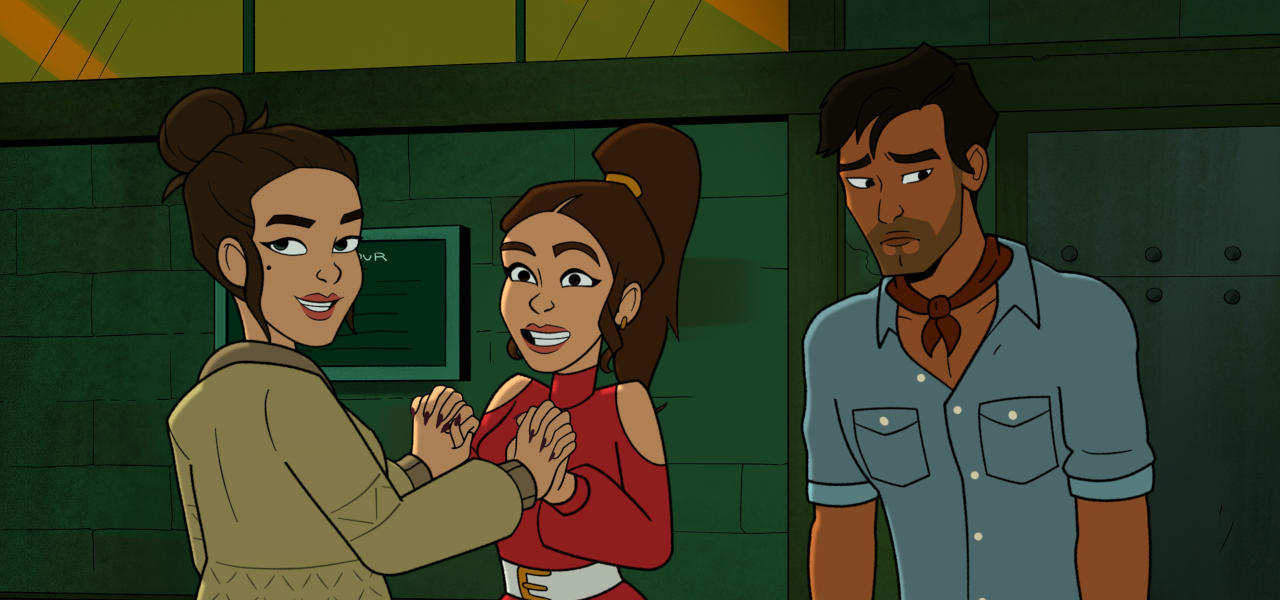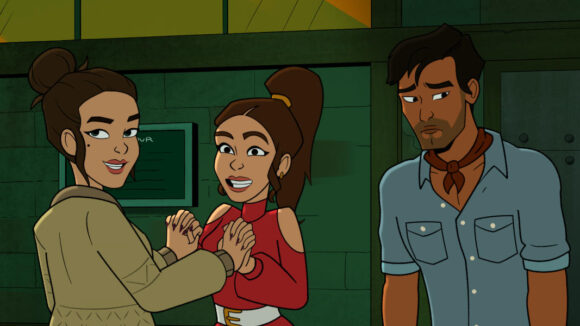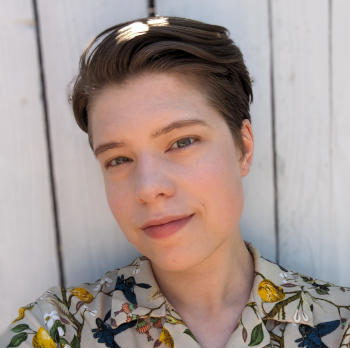

‘Praise Petey’ Character Designer Annalise Hollosy Talks Us Through An Exclusive Clip
Praise Petey is a new animated comedy series on Freeform that’s half rom-com and half cult documentary. The show fits well into an ever-growing adult animation landscape while also setting itself apart from a crowd that can often feel full of copy-cats.
The show was created by former Saturday Night Live head writer Anna Drezen, who executive produces alongside Mike Judge, Greg Daniels, and Dustin Davis for Bandera Entertainment and Alexy Bulkley, Corey Campodonico, and Monica Padrick for Shadowmachine, which handled animation. The show is produced by 20th Television Animation.
In the series, Petey is an NYC “It Girl” who thinks she’s got everything figured out. That all changes when her deceased father leaves her in charge of his small-town cult New Utopia. Cartoon Brew has been given exclusive access to a clip from today’s new episode “Not-Sad Adult Birthday” in which Petey’s attempts to meet men at a bar are thwarted.
We were also thrilled to be joined by character designer Annalise Hollosy who talked us through the clip and discussed her role on the show, the most enjoyable parts of production – which was done remotely, and finding a career-life balance when working from home. Hollosy graduated from The Savannah College of Art and Design with a BFA in animation and now lives in Los Angeles.
How did you get involved with this show, and what was your role during production?

I joined the show right at the beginning, so we were establishing all the main characters and building the world. There really wasn’t a pitch bible or anything before we started, so there was a lot to figure out. Our art director Amanda Lake was great about corralling everyone and making sure that we were all on the same page. We were in production from around June to December, so it was quite a while and it was great to get to know the crew, although we were working remotely. Each day started with a meeting where everyone would check-in, then we just got right to work.
Praise Petey is a heavily character-driven series, which must be a dream for a character designer. Does the way you work change on a series like this, where the entire narrative is driven by the characters rather than the setting or a heavily constructed narrative?
Whether intended or not, I think it certainly changes how we approached it. We were making decisions that all had to be in support of the writers’ and directors’ vision for these characters. I was grateful to work on a show where we got to, from the ground up, define how we wanted to tell the characters’ stories. Our art director gave us some guidelines about general character poses, but we were really kind of given free rein, in the beginning, to experiment and do what we thought looked good. I enjoyed that more than coming into a show where you start with a very specific base. This one felt very organic; like we could make the decisions that we believed were right.
That all sounds like a lot of fun, but no bible and vague guidelines probably create other challenges too. Where did you look for inspiration and how did you find the aesthetic you ended up with?
Amanda had a kind of mood board of things they were looking for. When I came on it was pitched to me as a rom-com cult documentary, and so we asked “Where can we go with that?” So we had to balance the comedic aspects and make sure they weren’t too realistic but also wanted to push into a new direction that we hadn’t really seen before. I think things really sort of tied down when we had the main cast figured out. It was like, now we have a base to work from.
What was the most fun thing you got to do on this show?
My favorite part was doing the character’s special poses and expressions, especially odd angles that you wouldn’t normally have in the models. The best assignments were like, “What if this character is crying completely uncontrollably, what would that look like?”
In the scene you’ve shared with us today, we see Petey interact with several men characters that, for the joke to land, needed to be instantly recognizable as fitting into established archetypes. How did you approach that task when designing these characters?
So for this scene, we called it the Hunk Bar, we were given the script and the storyboards which both gave us a lot to work from already. Several of the hunks there were definitely inspired by people we either know in real life or fit a common trope that we were all familiar with. One of the characters is the “artistic hunk” and I think most of us that went to art school anywhere there are lots of artists have met this kind of guy who is too pretentious for his own good. Another one is our wounded hunk who felt like such a CW character trope. We talked a lot about Heart of Dixie when we designed his look where he hunches a lot and sort of talks out the side of his mouth.
Earlier you said that production was handled remotely on this show. How did you find that experience, and how well do you think it worked?
Yeah, only the line producers and production assistants were in-house. It was pretty great working from home, although sometimes I missed seeing people in person and it would have been nice to get breakfast before work or something like that. But it worked out in the long run and gave us a lot of flexibility. We also had artists who weren’t from L.A. working on the show, which allowed us to branch out and bring in people that otherwise couldn’t have worked on the show.
Where there any difficulties in working from home? Did you have to do anything special to keep your work and home lives separate?
That was difficult, yes. And I wouldn’t say I’ve become a master of it in any sense. But I did try to balance spending time on my computer and away from my computer. I also tried to make time to work on my personal art, but then again I was right back at my computer, so it was hard sometimes. I found that having a schedule was really helpful. Those morning meetings established a timeline for the day, but I also set aside time when I wouldn’t allow myself to be in the computer room. It was also important to take small breaks throughout the day. Maybe have a snack or just go outside for a while. It was harder at the start of production, but by the end I felt like I’d gotten into the swing of things.

.png)